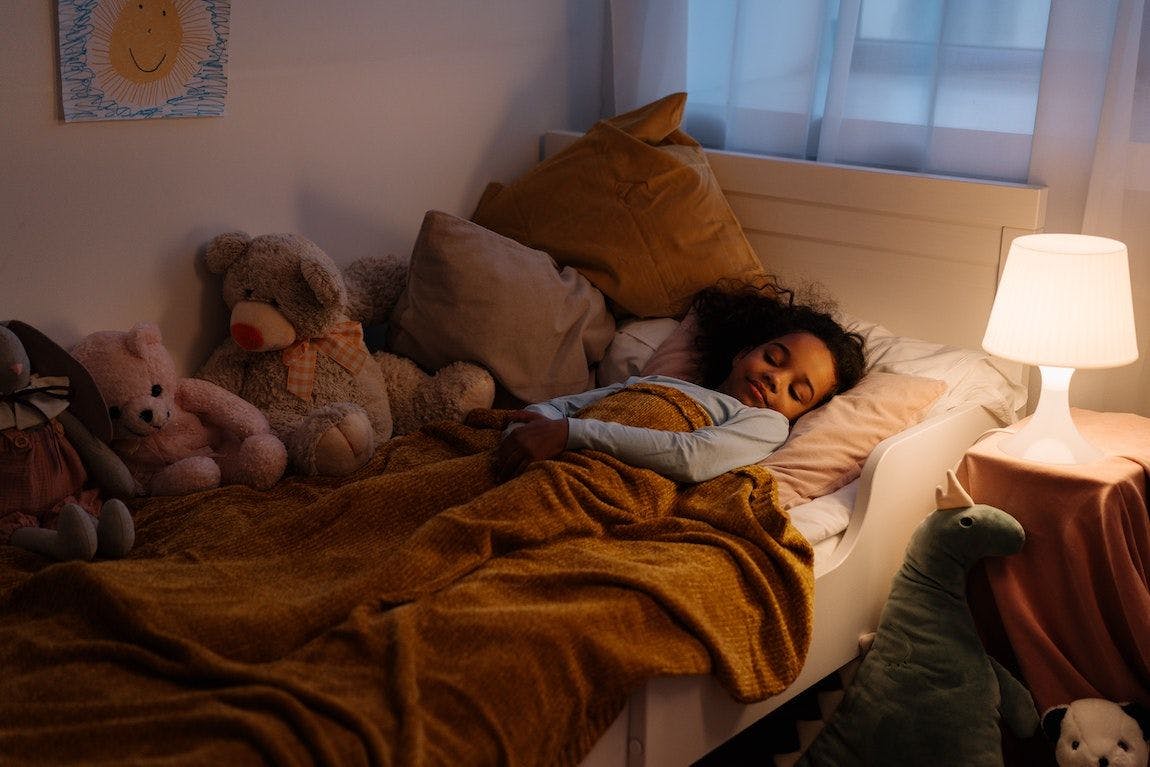4 strategies for supporting children with insomnia
updated on Jul 24, 2023

Help your child get the best night’s sleep possible, with these tips
Exhausted parents tend to breathe a sigh of relief as their children grow out of the sleep-broken baby and toddler years. But, for some of us, this isn’t the end of night-time woes, as sleep problems can blight older children, too. If your family is going through this, you’re not alone. A 2021 study by NHS Digital found that 29% of six to 10-year-olds, and 38% of those aged 11 to 16, regularly struggled with sleep.
It’s easy to feel powerless when your child is experiencing insomnia, but it can be overcome. “The key to resolving children’s sleep issues is to work out what is causing them,” says Vicki Beevers, CEO of The Sleep Charity. “Often, it’s more than one thing, and the list of potential causes is vast.”
Bedroom environment, anxiety, medical issues, temperature, diet, and bedtime routine are just a few of the factors that may play a part.
Once you’ve identified possible causes, you can take action. And though no single solution will work for everyone, these easily actionable strategies offer a good starting point to help promote a more restful night for the whole family.
Keep a sleep diary
If you’re trying to understand possible reasons for sleeplessness, a sleep diary is a proactive way to help establish patterns. “You can find out from a diary the average sleep duration of your child, and the times they wake and go to sleep,” says Vicki. “This can be helpful in identifying where their body clock is prior to sleep intervention.”
A sleep diary can also contribute to understanding trends around diet, naps, or bedtime routines. Keeping this kind of record for a few weeks can not only help to determine potential sleep disruptors, but also provides useful data if you decide to seek advice from your GP for your child’s problems. If you think this could work for you, there’s a downloadable sleep diary you might find helpful on The Sleep Charity’s website (thesleepcharity.org.uk).
Pay attention to time
All children require different amounts of sleep, and if your child isn’t falling asleep on going to bed, they may simply not be tired, in which case an adjusted bedtime could help. Think about the time they tend to nod off, and whether it could be beneficial to make lights-out a little later. This could prevent extra time spent in bed feeling wakeful, and becoming stressed before drowsiness kicks in.
In fact, long minutes (or hours) spent not being able to nod off can upset children, and an awareness of how long they’ve been trying to get to sleep can make matters worse.
“Clock-watching can increase anxiety,” says Vicki. “So removing any clocks from the bedroom may help with this.”
Embrace mindfulness and breathwork
Simple mindful activities before bed can aid the wind-down process. Reading is an obvious one, but other gentle activities can work too – anything from colouring and drawing to yoga, or jigsaws.
After lights-out, you can encourage the mindfulness to continue with simple breathing techniques, which focus the mind and promote feelings of calm. Introduce your child to ‘box breathing’: breathe in for a count of four, hold the breath for four seconds, then exhale to a count of four, and hold again for four, then repeat.
Try deep-pressure stimulation
Weighted blankets are designed to provide light, evenly distributed pressure on the body, mimicking the feeling of being hugged. As such, they can be an effective tool to help children feel calm when dropping off to sleep, and may prove especially helpful in cases where anxiety is a cause of sleeplessness, thanks to their swaddling effect.
Make sure you buy from a reputable supplier and choose the appropriate weight – a weighted blanket should be no more than 10% of the child’s bodyweight. The Royal College of Occupational Therapists (rcot.co.uk) has a useful guide to weighted blankets as a sensory-based intervention.
Whatever approach you choose, remember not to expect an instant result. “Sleep issues often get worse before they get better when new strategies are introduced,” warns Vicki. “Therefore, it’s important to try anything new for at least two weeks to see if it makes any difference. Consistency is key when it comes to addressing sleep problems.”

